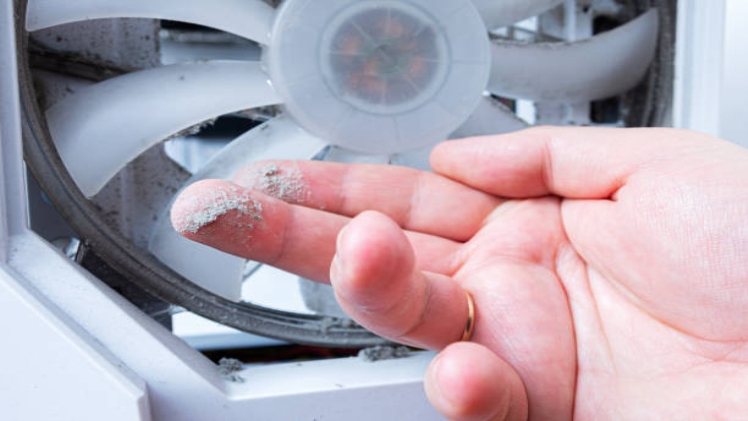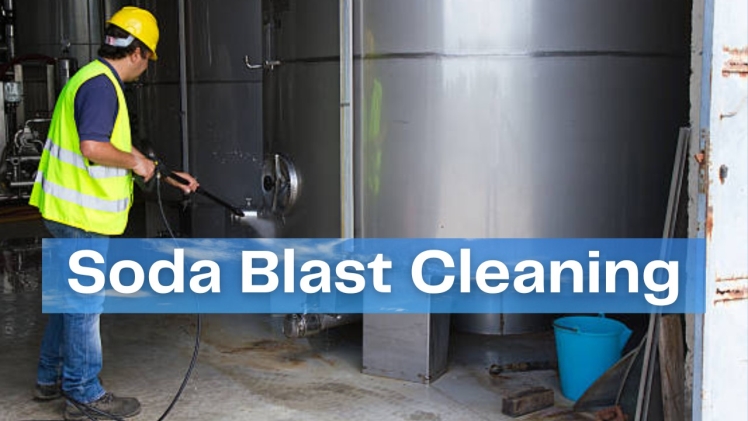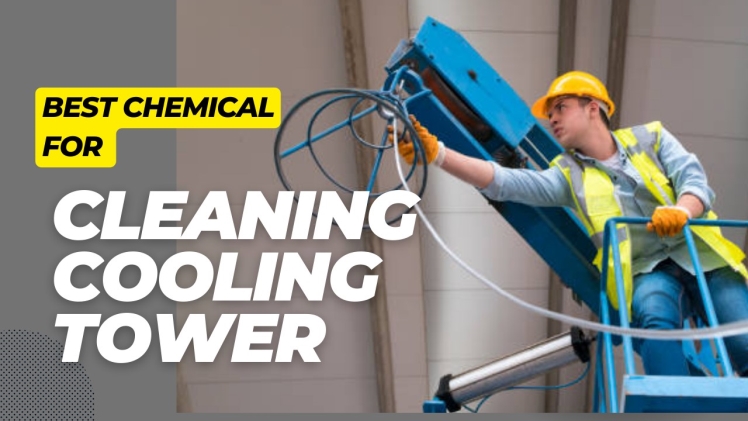Power plants and manufacturing facilities depend heavily on cooling towers for many operations. They provide temperature control and sustain the effectiveness of critical equipment.
But with time, these towers gather debris, scale, and other impurities that can impair performance and increase energy usage. Regular maintenance and cleaning are necessary to keep cooling towers operating at their best.
Soda blast cleaning has become popular for cooling towers due to its efficiency and commitment to environmental protection. This blog post will discuss the soda blast cleaning method and why it’s regarded as one of the top solutions for cooling tower maintenance.
Understanding the Importance of Cleaning Cooling Towers
The extreme environmental conditions that cooling towers are subjected to include heat, dampness, and airborne pollutants. They frequently turn into breeding grounds for bacteria like Legionella, which may be extremely dangerous to human health. In addition, the buildup of scale, silt, and algae can impair the tower’s effectiveness, increasing energy expenditures and shortening equipment lifespan.

Regular cooling tower cleaning is essential for the following:
Efficiency: Clean cooling towers operate more efficiently, saving energy and reducing operating costs.
A cooling tower can maintain the desired temperature with less energy when it runs efficiently. A less effective tower could need to operate longer or with a greater fan speed to have the same cooling effect, increasing energy use and utility costs.
Reduced operational expenses go hand in hand with energy efficiency. By keeping their cooling towers clean, businesses may reduce their power costs, resulting in long-term benefits.
An effective cooling tower prevents overheating of related machinery (such as chillers or condensers). When a tower isn’t functioning properly, it can stress the associated equipment, potentially leading to early wear and tear, failures, and expensive repairs.
Safety: Proper maintenance reduces the risk of Legionella and other harmful bacteria, ensuring a safe working environment.
The hazard to the health of employees and the surrounding populations is reduced with proper maintenance, which includes routine cleaning, disinfection, and water treatment.
To avoid Legionella contamination, several areas have laws and restrictions in place. Businesses may avoid potential legal and financial repercussions by maintaining their equipment properly and following these regulations.
Businesses prioritizing safety by keeping their cooling towers clean show that they care about the welfare of their workers, clients, and the neighborhood. Their reputation and public image may be improved as a result.
Longevity: Regular cleaning extends the life of the cooling tower and associated equipment.
Corrosion, degradation, and other types of damage can be avoided by performing routine cleaning and maintenance. Businesses can reduce replacement and maintenance costs by increasing the lifespan of the cooling tower and related equipment.
When an old cooling tower breaks down, operations might be disrupted, resulting in downtime and lost production. Maintaining equipment lifetime contributes to operational continuity.
By delivering dependable performance for a longer time and lowering the need for regular capital expenditures, a well-maintained cooling tower gives a superior return on investment (ROI).
Soda Blast Cleaning: A Gentle yet Powerful Solution
Sodium bicarbonate, sometimes known as baking soda, is used as an abrasive medium in the cleaning process known as soda blast cleaning. It is a flexible and efficient cleaning method with several benefits, especially when used to clean cooling towers.

Abrasive Media:
Sodium bicarbonate is utilized as the abrasive medium in soda blast cleaning. Sodium bicarbonate is mild and non-destructive, unlike common abrasives like sand, which may be harsh and abrasive. Due to its distinct quality, baking soda is a great option for cleaning sensitive surfaces, such as those in cooling towers.
Pressurized Application:
Sodium bicarbonate particles are applied to the cooling tower’s surfaces during the cleaning process using compressed air. Typically, soda blasting is carried out with specialized equipment. The particles are accelerated by the force of the compressed air and hit the polluted surfaces as a result.
Effective removal of contaminants:
The sodium bicarbonate particles function to efficiently dislodge and remove the pollutants when they come into contact with the surfaces of the cooling tower. This covers eliminating diverse materials, including scale, rust, paint, and even biological development, like germs and algae. The abrasive action of the soda successfully cleans the surfaces without harm despite its gentleness.
Minimal Cleanup:
The minimum post-process cleanup required is a key benefit of soda blast cleaning. In addition to being excellent in removing impurities, the sodium bicarbonate particles employed in the cleaning process are also ecologically benign. The soda granules break down into a small powder upon impact, making them simple to remove off surfaces. In contrast, other abrasive media, like sand, can leave a big mess and need time-consuming cleanup.
Reduced Costs of Disposal:
The low waste production of soda blast cleaning directly affects disposal costs. Disposal is made easier and more cost-effective since sodium bicarbonate particles break down and do not leave significant amounts of abrasive material or pollutants behind.
Advantages of Soda Blast Cleaning for Cooling Towers
Let’s go more into the benefits of soda blast cleaning for cooling towers:
Environmentally Friendly:
Cleaning cooling towers using soda blasting is a procedure that respects the environment.
Unlike other abrasive compounds, soda is not regarded as a harmful substance. This indicates no handling or disposal concerns connected with its use. Because sodium bicarbonate is biodegradable, decomposing naturally over time, its environmental effect is much lower.
The need for harsh chemical cleaners is decreased via soda blast cleaning. Soda’s inherent abrasiveness avoids chemical solvents, making cleaning more environmentally friendly.
Gentle on Surfaces:
The cleaning action of soda blasting is said to be mild yet efficient. Soda is non-abrasive, unlike more abrasive substances like sand that can etch or harm surfaces. Without endangering the cooling towers’ sensitive parts or underlying structure, it safely and effectively eliminates impurities.
To stop corrosion, cooling towers frequently feature protective coatings. These surfaces may be cleaned by soda blasting without removing any protective coatings, extending the life of the coating and the tower.
Efficient Contaminant Removal:
Cooling tower pollutants are effectively removed by soda blast cleaning. Even from difficult-to-reach locations, pollutants are successfully dislodged and removed by the mild abrasive action of soda particles. This provides a complete and comprehensive cleaning procedure.
Soda blast cleaning eliminates tough stains like scale, rust, and paint. The soda particles efficiently disintegrate and eliminate these difficult pollutants.
Cost-Effective:
For cleaning cooling towers, soda blast cleaning is a practical option. Fewer cleanup is required since very little waste is produced during soda blast cleaning. Because soda particles break up on impact, less mess must be cleaned after the procedure.
Reduced disposal expenses are another benefit of the limited trash. Waste material cleanup and disposal is easier and more economical than other abrasive cleaning techniques. Cleaning activities are frequently performed more rapidly using soda blast cleaning, which lowers labor expenses.
Soda Blast Cleaning: Protecting Your Cooling Towers and the Environment.
For industrial operations to run smoothly, cooling tower efficiency and cleanliness must be maintained. Soda blast cleaning is a highly efficient and ecologically beneficial technique for eliminating impurities, maintaining equipment, and assuring worker safety.
Its mild yet effective method makes it a top option for cleaning cooling towers across various sectors, assisting companies to prioritize environmental sustainability while saving time and money.

